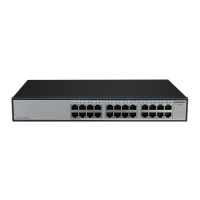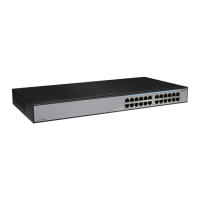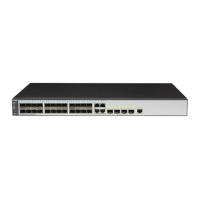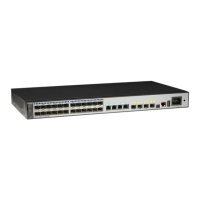NOTE
Configuring static default routes can also achieve the function of interaction between different routing
protocols, but require large configurations and are difficult to manage.
If multiple Level-1-2 devices are deployed, a routing policy can be configured to allow only the Level-1-2
device that meets the specified conditions to advertise a default route, preventing blackhole routes.
Procedure
Step 1 Run:
system-view
The system view is displayed.
Step 2 Run:
isis [ process-id ]
The IS-IS view is displayed.
Step 3 Run:
default-route-advertise [ always | match default | route-policy route-policy-name ]
[ cost cost | tag tag | [ level-1 | level-1-2 | level-2 ] ]
*
[ avoid-learning ]
IS-IS is configured to advertise a default route.
----End
6.7.4 Configuring IPv4 IS-IS to Import External Routes
If devices in an IS-IS area need to learn external routes, configure IS-IS on a Level-1-2 device
of this area to import external routes.
Context
If IS-IS is configured on a Level-1-2 device to advertise a default route, all traffic in IS-IS areas
will be forwarded by this Level-1-2 device. This will burden this Level-1-2 device because no
external route can be learned on the devices in the IS-IS areas.
If multiple Level-1-2 devices are deployed, optimal routes to other areas need to be selected. To
ensure optimal routes are selected, all the other devices in the IS-IS areas must learn all or some
external routes.
Routing policies can be configured to import or advertise external routes that meet specified
conditions to the IS-IS areas.
Procedure
l Configure IS-IS to import external routes.
1. Run:
system-view
The system view is displayed.
2. Run:
isis [ process-id ]
The IS-IS view is displayed.
S6700 Series Ethernet Switches
Configuration Guide - IP Routing 6 IS-IS Configuration
Issue 01 (2012-03-15) Huawei Proprietary and Confidential
Copyright © Huawei Technologies Co., Ltd.
269

